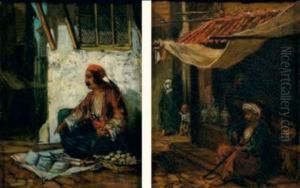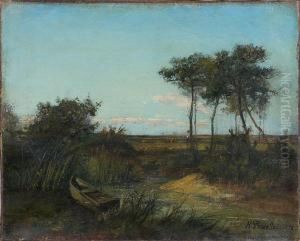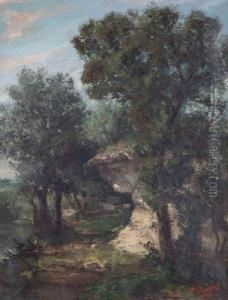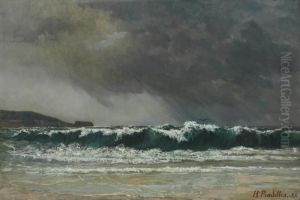Hippolyte Pradelles Paintings
Hippolyte Pradelles, whose full name was Jean-Louis-Hippolyte Pradelles, was a French landscape painter active during the 19th century. Born in 1809, Pradelles developed an interest in art at an early age and pursued his passion through formal training. Although not as widely known as some of his contemporaries, Pradelles contributed to the landscape genre, which was growing in popularity during his lifetime.
Pradelles' work predominantly focused on the traditional landscape, capturing the bucolic and pastoral scenes that were favored by the Romantic movement. His style was characterized by a dedication to realism and a keen observation of nature. He was attentive to the effects of light and atmosphere on the landscape, which is evident in his works. Pradelles exhibited his paintings in several Salons, the official art exhibitions of the Académie des Beaux-Arts in Paris, which were the main showcases for French artists to present their work to the public.
Throughout his career, Pradelles remained relatively conservative in his approach to painting, maintaining a focus on naturalism at a time when the art world was beginning to embrace movements such as Impressionism. Despite the overshadowing fame of the avant-garde artists of his time, Pradelles maintained a modest level of success and a dedicated following for his serene and meticulously detailed landscapes.
Pradelles continued to paint and exhibit his work until his later years. He passed away in 1892, leaving behind a body of work that, while not revolutionary, represents the 19th-century French landscape tradition. His paintings may still be of interest to collectors and historians who appreciate the era's conventional landscape art. Pradelles' work is a testament to the era's rich artistic diversity, highlighting the breadth of styles and approaches that coexisted during a dynamic period in art history.



